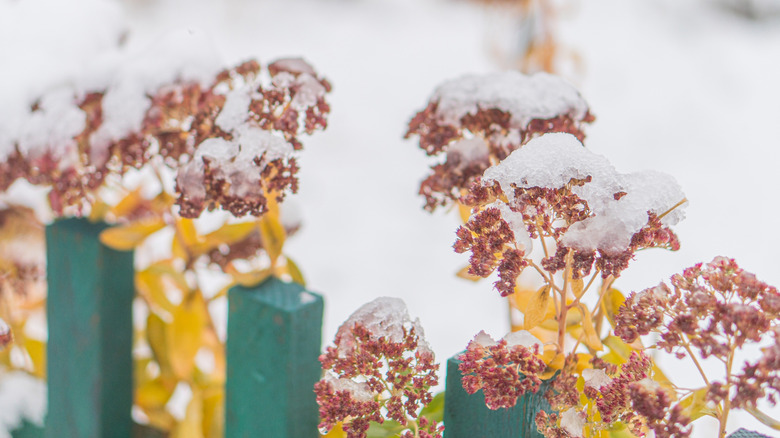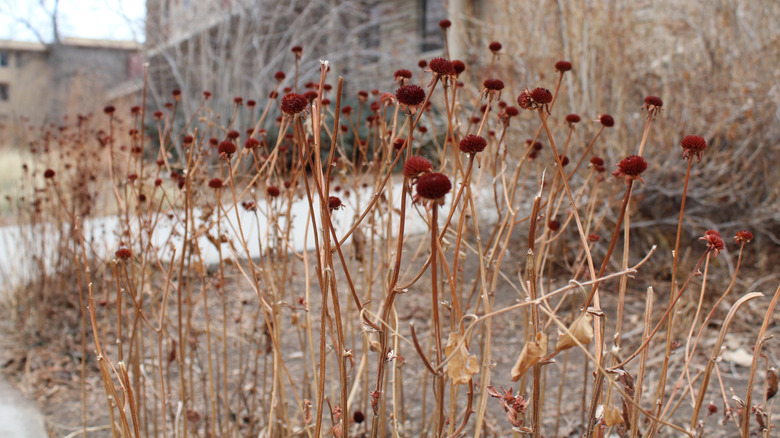Mistakes Everyone Makes When Caring For Dormant Plants
Plants don't require nearly as much time or attention when they're dormant as they do in the summertime, but there are still some care requirements to help them stay in good shape. Dormancy is a survival mechanism that keeps plants alive through colder seasons, like late fall and winter. Though it may look as if your dormant plants are dead or dying, they actually use winter as a time to conserve energy and rest.
Understanding the unique needs of dormant perennial plants can mean the difference between having healthy greenery and having struggling vegetation in the spring. To ensure the well-being of your vegetation, there are several mistakes to avoid that can hurt your plant's ability to thrive, including overwatering, pruning, and incorrect covering.
One of the biggest mistakes people make when caring for dormant plants is overwatering them. Because winter winds can be drying, many people overwater their plants around this time to try to keep their greenery healthy. Though your plants still need moisture, it's important to be cautious of overwatering while your plants are dormant, as they are using significantly less energy, and too much wetness can lead to root rot. Instead, let the natural environment support the plant as much as possible, and stop watering once the ground completely freezes. Then, simply check to ensure it is getting enough moisture with snow, and supplement as needed.
Common dormant plant care misconceptions
Many people prune when caring for their outdoor dormant plants during the winter. Though this can seem like a good idea, it's an error that's important to avoid when plants go dormant. Pruning helps stimulate new plant growth, which can be especially sensitive to the elements. In the cold of winter, pruning can cause new growth on the plant to be damaged. Instead, limit pruning during this time, and wait until temperatures have warmed up to prune your perennials.
Similar to the misconceptions around watering and pruning dormant plants, fertilizing is another common issue. Nitrogen fertilizer helps produce new growth and development just like pruning does, but using this fertilizer in the fall or winter can make your plants more susceptible to damage. It's more beneficial to surround your plant with thick mulch before the ground freezes to protect the soil around it and help it stay warm.
Another common mistake is using clear plastic to cover your dormant perennial plants. It can be beneficial to cover your plants to protect them from frost, harsh winds, or especially cold winter days. However, clear plastic means the sun can warm the plant, leading to a constant state of thawing during the day and refreezing at night. Instead, allow your plant to stay frozen at all times by using white plastic. White plastic reflects the sun's rays so your dormant plants can save energy and don't have to go through a constant thaw-and-freeze cycle throughout the colder months.

